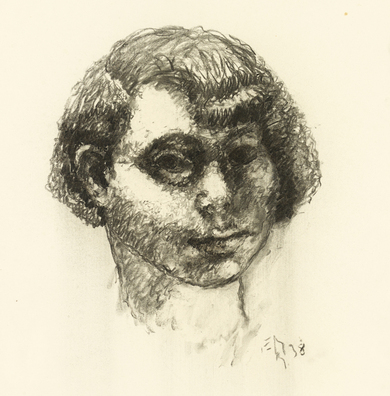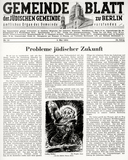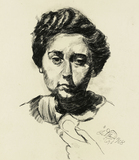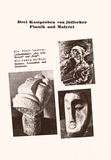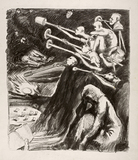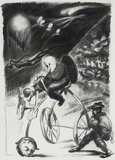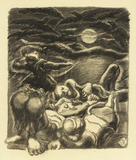Else Meidner, Self-Portrait, 1938
Else Meidner, Self-Portrait, 1938
But her drawing is almost more surprising; it is quite different from the drawing of "gifted women". Else Meidner does not flaunt her power; her work is thoroughly naive, sure, firm, full of tension and wonderfully animates its material.
Ludwig Meidner, Jewish Painters in Cologne (Jüdische Maler in Köln), in: C.V.-Zeitung, 6.1.1938, Nr. 1, 2. Beiblatt
The marriage between Ludwig and Else Meidner can characterized as strained. The age difference – Else Meidner, née Meyer, was a former pupil of Meidner’s and almost twenty years younger than he was – their different temperaments and a certain degree of competitiveness between the two artists soon led to conflict. The difficulty of life for them in Nazi Germany and their precarious financial situation after emigrating contributed to their estrangement from one another. When Ludwig Meidner returned to Germany in 1953, Else Meidner, for whom returning to the country of the perpetrators of the Holocaust seemed unbearable, remained in London. In spite of their artistic rivalry, Ludwig Meidner always held his wife’s work in high regard and did his best to promote her career.
"Ludwig tended to be shy, cautious, reserved and quiet. Even as a girl I could easily entertain a group of twenty people and make everybody laugh. And I had the gift of never being bored, which was very helpful in the marriage, since Ludwig slept till midday and I was alone in the mornings until my little David – our son, who was born on10 October 1929 – became the third member of our team. I was able to tell David many fairytales, for I knew them by heart, and to sing opera arias and operetta melodies to him without needing the notes in front of me. He was usually sung to sleep with ‘Celeste Aida.’ Ludwig did not allow me to have a radio or a gramophone, as I had had at home while growing up, because the sound disturbed him. But I could not live without music and so I sang and whistled – I was a good whistler – my favorite melodies to myself. In the evenings Ludwig and I painted or drew in our studio. David called Ludwig’s palette ‘papalette’ and mine ‘mamalette’." (letter from Else Meidner to Joseph Paul Hodin, not dated, quoted from: Joseph Paul Hodin, Aus den Erinnerungen von Else Meidner, Darmstadt 1979, p. 23)
Further reading:
Heuberger, Georg (Ed.), Ludwig und Else Meidner (exhibition catalog Jüdisches Museum Frankfurt, Ben Uri Gallery, London), Frankfurt a. M. 2002.
Else Meidner 1901-1987. Ölbilder, Gouachen, Zeichnungen, Radierungen (exhibition catalog Jüdische Gemeinde Darmstadt), ed. by Kulturamt der Stadt Darmstadt und der Ludwig Meidner Gesellschaft e. V., Darmstadt 1999.
Hodin, Joseph Paul, Aus den Erinnerungen von Else Meidner, Darmstadt 1979.

